Vuelta a España 2021: Five key stages
Nine summit finishes and a final time trial could make the 76th edition a fight to the very end
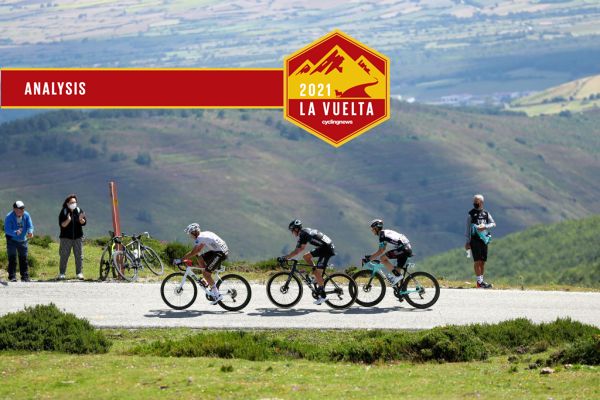
While Primož Roglič (Jumbo-Visma) again leads the list of overall contenders at the Vuelta a España as he chases a third consecutive victory, the route of this year’s three-week race is expected to produce a very different type of event to recent years.
Vuelta director Javier Guillén has described the third week as 'possibly the toughest in the race's history' and the presence of Egan Bernal and Richard Carapaz (Ineos Grenadiers), Mikel Landa (Bahrain Victorious), Hugh Carthy (EF Education-Nippo) and Romain Bardet (Team DSM) will offer a major challenge to Roglič. Fortunately for the Olympic time-trial champion, the final 33.8 kilometre race against the clock to Santiago de Compostela offers a chance for him to pull back vital seconds and so perhaps snatch a third winner’s jersey.
The stages of the 2021 Vuelta a España remain relatively short compared to the other Grand Tours as the route heads south to Murcia then north to the Cantabrian coast and west to finish in Galicia. It cuts out Catalunya, the Basque Country and the Pyrenees, but there are nine summit finishes, one more than last year, and they will begin to shape the GC battle as soon as stage 3 and the difficult ascent to Picón Blanco.
The sprinters and stage hunters will have some opportunities but as ever, the Vuelta is a mountainous race, with the key stages scattered throughout the three weeks rather than coming in bigger and later clusters, like in the Giro or the Tour. These are the five stages Cyclingnews expects will be key to overall victory in the 2021 Vuelta a España.

Stage 3: Santo Domingo de Silos to Espinosa de los Monteros/Picón Blanco

Stage 3 is the only stage of this year’s Vuelta a España over 200 kilometres in length but sets the tone for the race with the first, steep mountain top finish.
Already raced at last week’s Vuelta a Burgos, the Picón Blanco's narrow, relentlessly steep lower slopes and wind-blasted upper segment are merciless.
The 7.6 kilometre climb comes after a ride north from Santo Domingo de Silos, with only some minor climbing in the early kilometres. Suddenly hitting the nine per cent climb will hurt everyone in the peloton, with the 40˚C Spanish summer heat also likely to be a major factor.
Get The Leadout Newsletter
The latest race content, interviews, features, reviews and expert buying guides, direct to your inbox!
The roads of the Picón Blanco have recently been resurfaced but there is no escaping the constant gradient, with the middle three kilometres all in double digits, with sections as steep as 17 per cent. Climbing up the side of a valley, there are few hairpins to offer a moment of recovery or mentally divide the climb into manageable sections.
The Picón Blanco will create first real time gaps of this year’s Vuelta and indicate who are the true contenders. Anyone losing a minute here could already be out of overall contention.
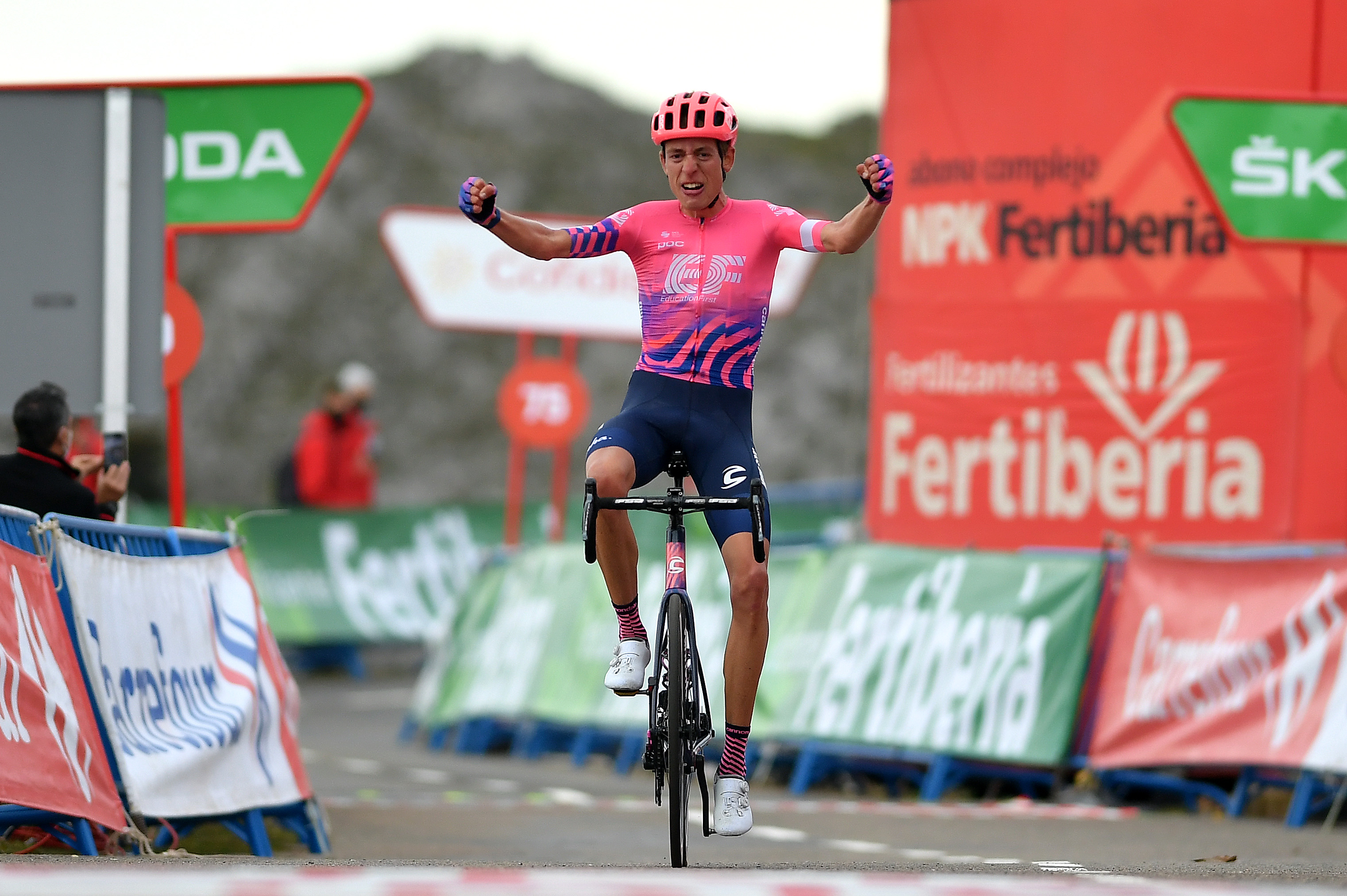
Stage 9: Puerto Lumbreras - Alto de Velefique, 187.8km
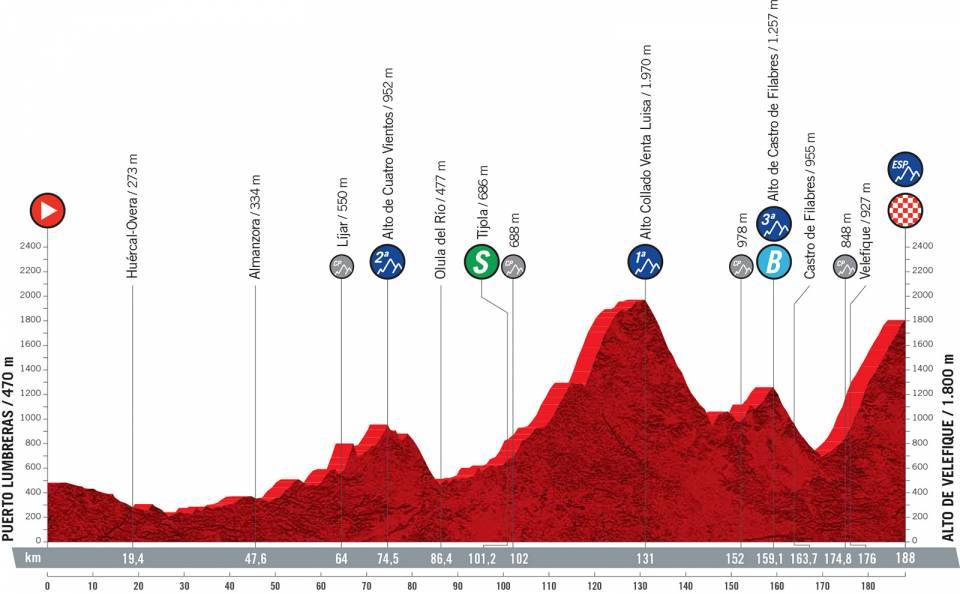
While many of the Vuelta stages are short, steep affairs, stage 9 from Puerto Lumbreras to Alto de Velefique in the semi-deserted inland area of Almería is a long hard day in the mountains and so one of the hardest stages of the race.
The 187.8 kilometre stage includes 4,500 metres of vertical climbing, with the Alto de Cuatro Vientos coming after 75 kilometres, the long Collado Venta Luisa mid-stage and then the 13.2 kilometre climb to the finish atop Alto de Velefique.
The Collado Venta Luisa is officially 29 kilometres long but rises for nearly 40 kilometres all on exposed roads running through some of the emptiest and bleakest drylands of Spain's interior. A brief descent mid-climb reduces the average gradient to 4.4 per cent but it is followed by four kilometres at a painful nine per cent. The area is famous as the location for Clint Eastwood's spaghetti westerns in the 1960s and we can expect a shootout in the expected 40-degree summer heat.
"The heat plus 4,500 metres of vertical - that's going to be very hard. There's always the risk of strong winds in that area on exposed roads, as well,” former rider and now co-designer of the Vuelta route Fernando Escartín told Cyclingnews of the stage.
"When you come off the Venta Luisa, there's no time to rest because there's a draggy third category straight afterwards, the Filabres and then, after another long drop down, you're onto the Velefique itself.
"It's where the GC favourites will probably start to shake the tree a little to see what they can do overall. It's going to be a big day."
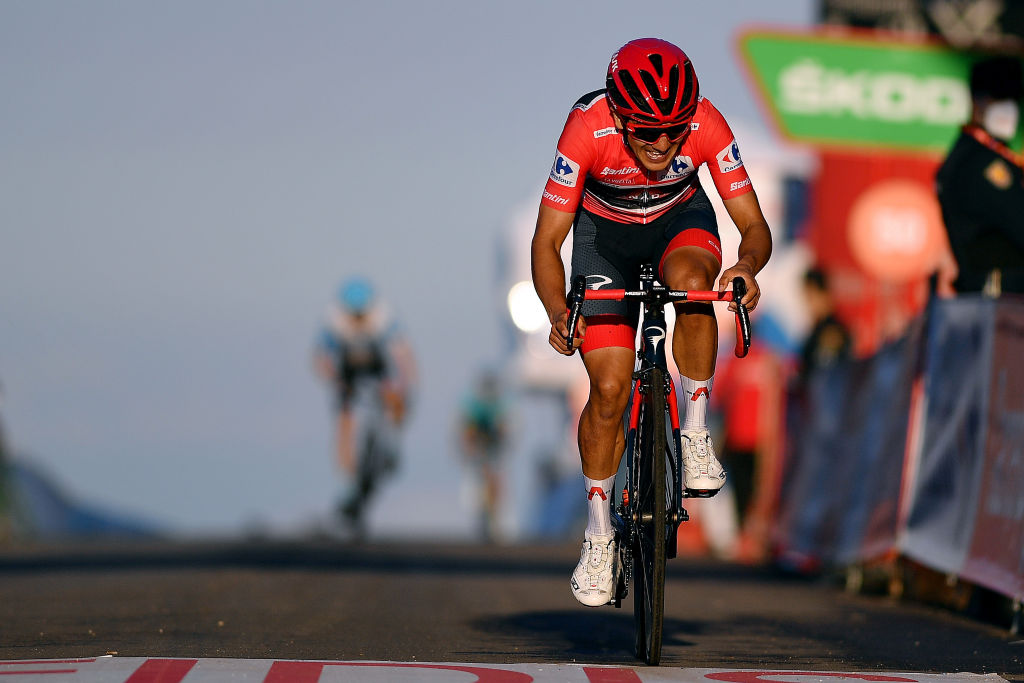
Stage 14: Don Benito - Pico Villuercas, 165.7km
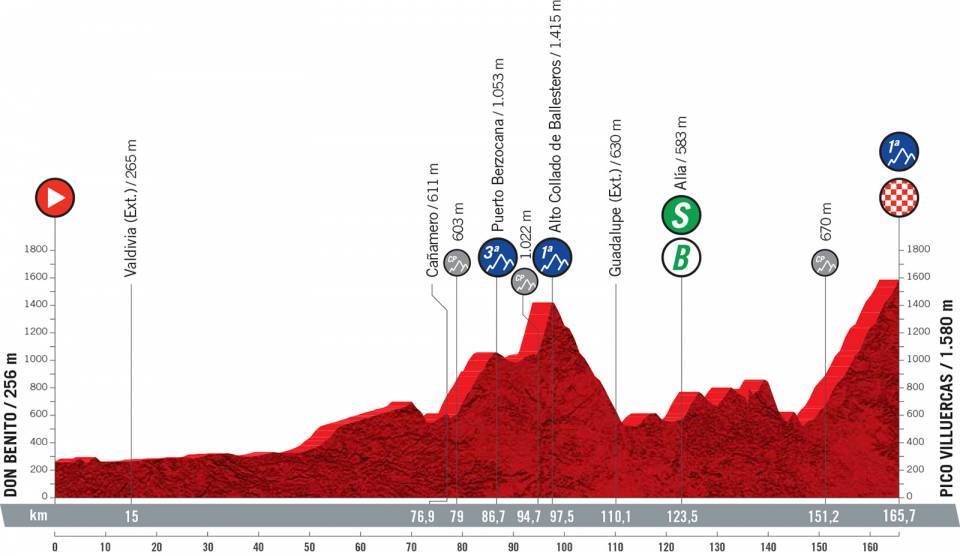
The Vuelta a España is the most unpredictable of the three Grand Tours and stage 14 offers a perfect opportunity for someone to turn the general classification on its head, crack a major rival or pull back a chunk of previously lost time.
The 159.7km stage in the deepest, isolated roads of south-western Spain ends with the usual steep climb to the line on the Pico Villuercas but it is the Alto Collado de Ballesteros, on the same mountain but a different climb, where the attacks and surprises could come.
“If somebody's strong enough to go on a long-distance attack, they could blow the entire race apart," Escartín explained. "We've ranked it first category because it's a cement track from start to finish and the average gradient is mostly between 15 and 20 per cent.
"You get over the top of the Collado de Ballesteros, then you drop down the same road that the race comes back up later, do a loop on really narrow, technical roads, then head back up again. It'll be hard to organise a chase too."
The Collado de Ballesteros is ‘only’ 2.8 kilometres long but climbs at 14 per cent. It is also preceded by the 7.7 kilometres Puerto Berzocana climb, which really does open the door to the steep climb and sets up for brave long-range attacks.
The race descends down the Pico Villuercas for a loop over five short hills before returning for the 14 kilometre climb to the finish.
This stage is worth following from start to finish.
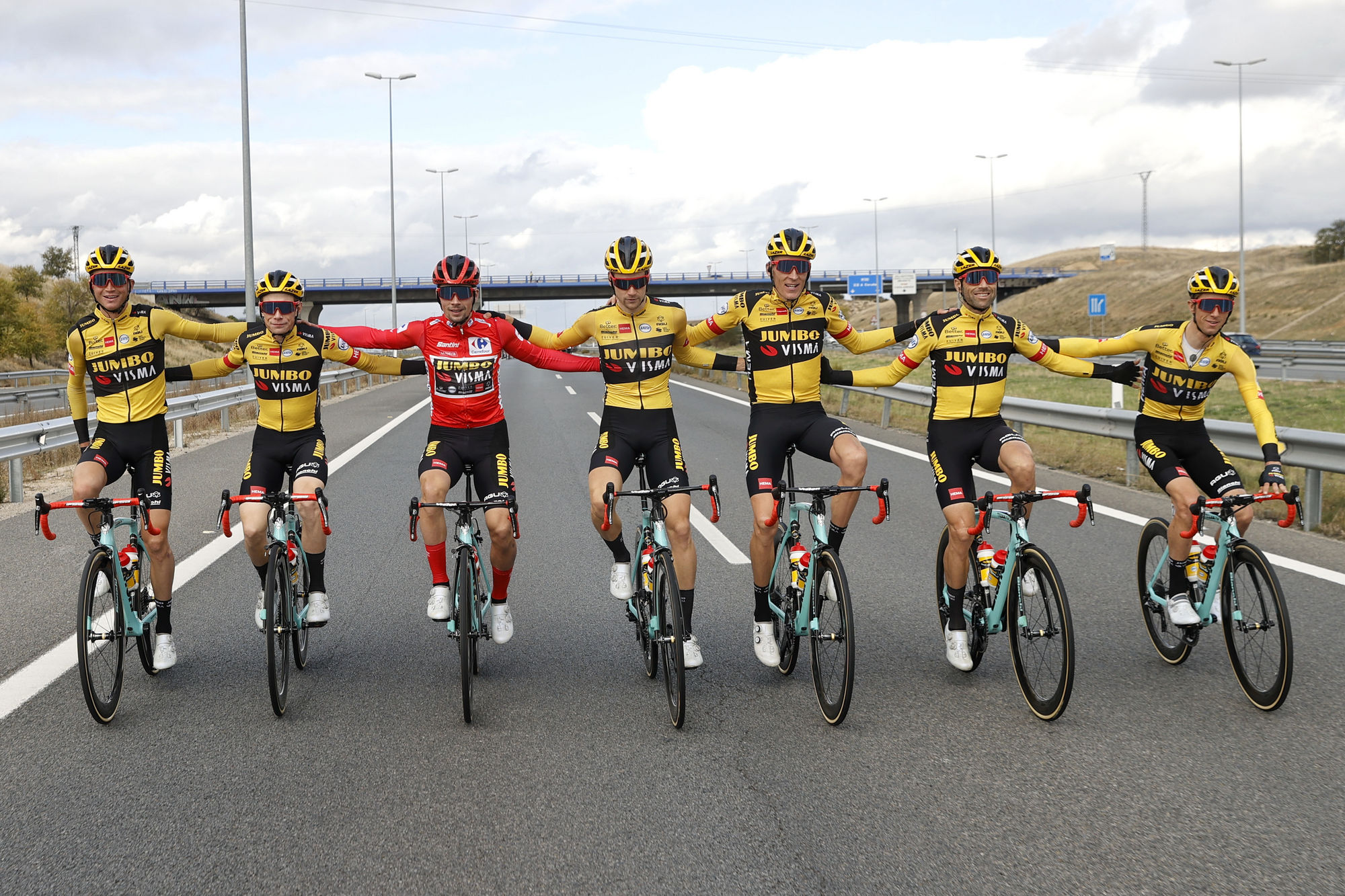
Stage 18: Salas - Alto de Gamoniteiro, 162.6 km
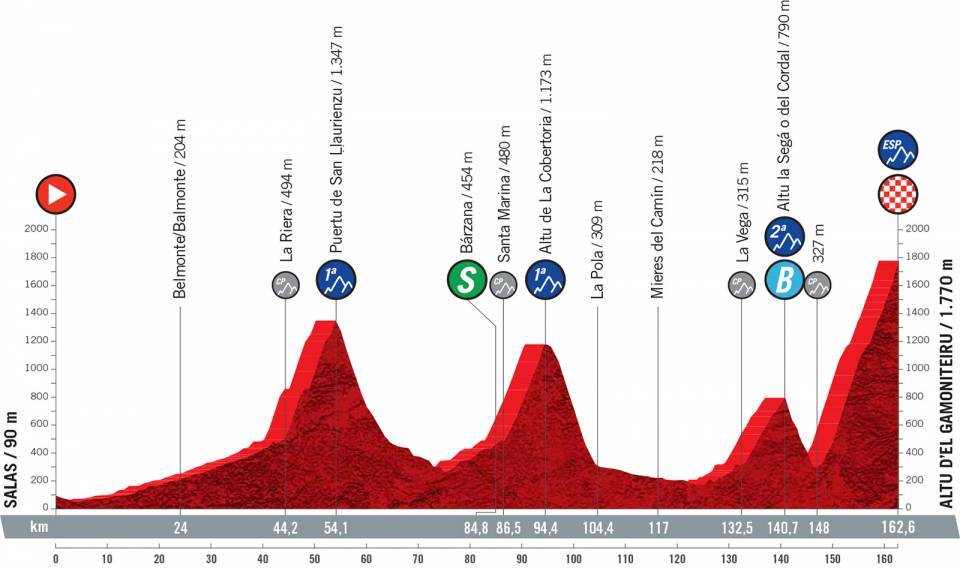
The terrible final week includes two monster climbing stages through the Picos de Europa mountains in Asturias, with the new finish on Alto de Gamoniteiro overshadowing the previous day’s stage up to Lagos de Covadonga.
The Covadonga and the nearby Alto de l'Angliru are known as the hardest climbs in northern Spain. The Alto de Gamoniteiro is part of the same mountain range but is something else and is the toughest single final climb of the 2021 Vuelta.
It includes more altitude metres, steeper gradients and is longer than the Alto de l’Angliru, with numbers of 14.6 kilometres and an average gradient of 9.8 per cent.
The Spanish website altimetrias.net, ranks climbs by a coefficient; the Alto de l’Angliru scores 514 points and the Alto de Gamoniterio 492. The overall contenders at the Vuelta will decide which is really the hardest of all.
"It's the last big opportunity for the climbers to take time before that final time trial, and if they're feeling strong, this is a brilliant opportunity," Escartín said. "The flip side being that any rider feeling weak on a climb that long, and with such tough slopes, could lose a huge amount of time.
"The Gamoniteiro's hardest ramps are maybe 16 per cent or 17 per cent, so not as steep as the 22 per cent sections of the Angliru, but what makes it so hard is it's just constantly steep. Like every Asturian climb, the road is narrow and twisting. Although by the time we reach the top there will be so few riders in the front that shouldn't be a problem."
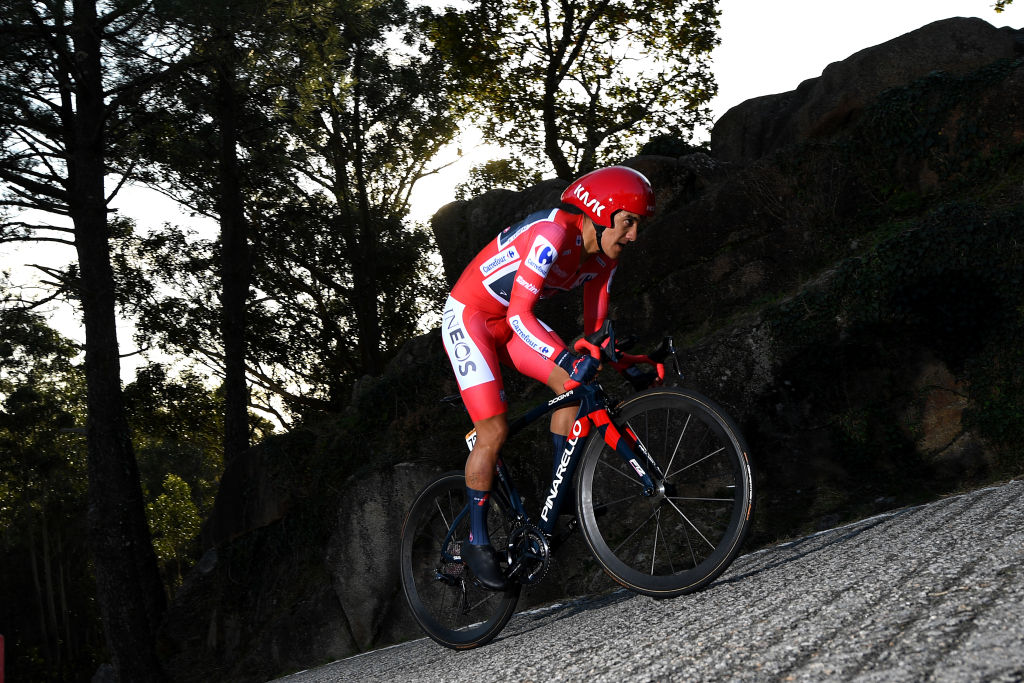
Stage 21: Padrón - Santiago de Compostela: Individual time trial, 33.8km
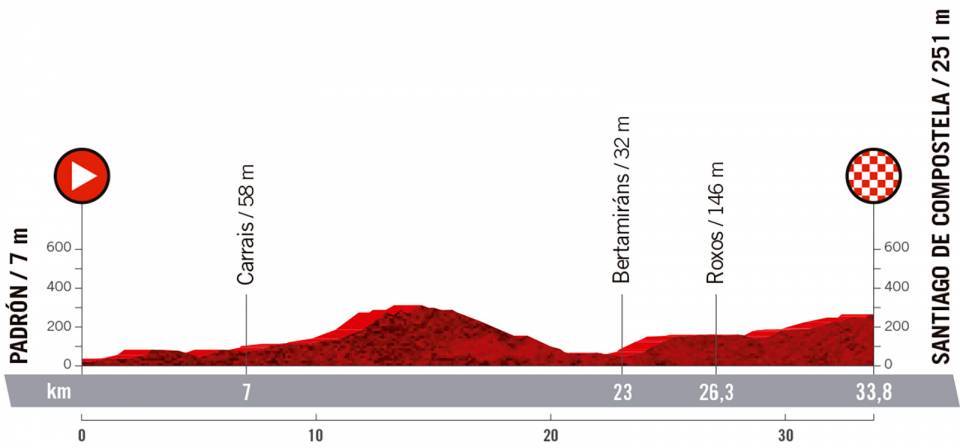
After all the climbing, the nine mountain top finishes and steep roads of the Asturias, the 2021 Vuelta a España will be decided by the final day 33.8 kilometre individual time trial from Padrón to Santiago de Compostela, that also marks the end of the Camino de Santiago pilgrimage route.
The 1993 Vuelta ended with a very similar time trial back in 1993 when Escartin was a teammate of eventual winner Tony Rominger.
The 2014 Vuelta also finished with a 9.7 kilometre time trial around the city and the magnificent medieval cathedral. Italy’s Adriano Malori won the stage and Alberto Contador won the overall, 1:10 ahead of Chris Froome.
It will be fascinating to see if a pure climber can hold on and win or if the likes of Roglič can gain enough time during the 33.8 kilometre test to take victory.
"It's very similar to 1993, with a short climb early on, a drop down and then a long draggy uphill into Santiago. It's a route which suits power racers, not at all technical apart from the last part, which is inside the city,” Escartín explained.
Rominger lost 48 seconds to Alex Zülle in the 1993 time trial but hung on to win the Vuelta by 29 seconds.
Escartín is convinced the 2021 Vuelta could well be just as close and perhaps see a nail biting like the La Planche des Belles Filles time trial at the 2020 Tour de France.
Roglič, of course, will be hoping for a very different outcome and perhaps a third consecutive victory.
"If you look at mountain stages recently, the time differences between the top two to four names are minimal, so the whole race could end up being decided on that last day. That's what we're hoping anyway," Escartín said.

Stephen is one of the most experienced member of the Cyclingnews team, having reported on professional cycling since 1994. He has been Head of News at Cyclingnews since 2022, before which he held the position of European editor since 2012 and previously worked for Reuters, Shift Active Media, and CyclingWeekly, among other publications.